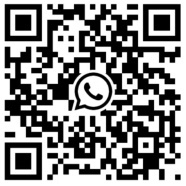Radiation Lead Screen: Essential Protection for Modern Medical and Industrial Facilities
Aug 01,2025
Introduction: The Critical Need for Radiation Protection
In today's radiation-intensive work environments, from hospital radiology departments to industrial testing facilities, radiation lead screens have become an indispensable safety component. These specialized barriers provide essential protection against harmful ionizing radiation while allowing clear visibility of procedures. With global radiation safety regulations becoming increasingly stringent, the market for advanced radiation lead screens is projected to grow at 7.5% annually through 2028, reflecting heightened awareness of occupational safety requirements.
This comprehensive guide examines the technology behind modern radiation lead screens, their diverse applications across industries, material innovations, installation best practices, and emerging trends in radiation shielding solutions.
Why Radiation Lead Screens Are Vital for Safety
Radiation lead screens serve three primary functions in radiation environments:
Effective Radiation Shielding:
Block 90-99% of scattered radiation at typical diagnostic energies (50-150kVp)
Reduce operator exposure to well below 1mSv/year regulatory limits
Prevent secondary radiation leakage into adjacent areas
Operational Efficiency:
Maintain clear visibility with minimal distortion
Allow unimpeded communication between staff
Enable real-time monitoring of imaging or testing processes
Regulatory Compliance:
Meet NCRP Report No. 147 requirements
Satisfy OSHA radiation protection standards
Comply with international IEC 61331-1 guidelines
Recent studies demonstrate that properly installed radiation lead screens can reduce occupational radiation exposure by up to 95% compared to unshielded workstations.
Technical Specifications of Modern Radiation Lead Screens
Core Construction Elements:
| Component | Specification | Purpose |
|---|---|---|
| Lead Core | 0.5-3.0mm Pb equivalent | Primary radiation shielding |
| Viewing Window | 1.5-2.5mm Pb equivalent lead glass/acrylic | Visual monitoring |
| Frame Material | Powder-coated steel or aluminum | Structural support |
| Mobility System | Locking casters (for mobile units) | Flexible positioning |
| Surface Finish | Antimicrobial coating | Infection control |
Performance Standards:
Radiation attenuation tested per ANSI N43.3
Impact resistance (ASTM F1236)
Fire rating (UL 10B/C)
ADA compliance for medical applications
Common Configurations:
Stationary Lead Glass Screens:
1.5-3.0mm Pb equivalency
Wall-mounted or ceiling-suspended
Ideal for fixed imaging positions
Mobile Lead Acrylic Barriers:
0.5-2.0mm Pb equivalency
Wheeled bases for flexibility
Perfect for multi-use spaces
Modular Partition Systems:
Interlocking lead-composite panels
Customizable layouts
Integrated lead glass windows
Ceiling-Suspended Screens:
Track-mounted systems
Vertical movement capability
Common in ORs with C-arm fluoroscopy
Installation and Maintenance Best Practices
Pre-Installation Planning:
Conduct radiation survey to determine required shielding
Verify floor load capacity for mobile units
Plan workflow patterns around screen placement
Ensure proper clearance for door swings or curtain access
Professional Installation:
Assemble frame structure first
Install lead panels with overlapping seams
Secure all connection points
Conduct post-installation radiation leakage test
Train staff on proper use and limitations
Maintenance Protocol:
Weekly: Visual inspection for damage
Monthly: Clean viewing surfaces
Quarterly: Check moving parts and seals
Annually: Professional radiation survey
Signs Your Screen Needs Replacement:
Visible scratches impairing visibility
Failed radiation protection tests
Structural damage or warping
Outdated lead equivalency standards
Emerging Technologies in Radiation Lead Screens
Smart Shielding Systems (Available Now):
Integrated real-time radiation sensors
Automated exposure logging
Cloud-connected maintenance alerts
Advanced Materials (2024-2025):
Lead-free nanocomposites
Self-healing surface treatments
Antimicrobial copper alloys
Enhanced User Interfaces (In Development):
Augmented reality overlays
Touchscreen control panels
Voice-activated adjustments
Sustainable Solutions (Market Ready):
Recyclable shielding materials
Reduced manufacturing waste
Energy-efficient production
Case Study: Regional Medical Center Implementation
Challenge:
A 300-bed hospital needed to upgrade radiation protection in its busy imaging department without disrupting patient services.
Solution:
Installed modular radiation lead screens featuring:
2.0mm Pb equivalent nano-lead composite
Mobile configurations for flexible use
Integrated real-time dosimetry
Results:
94% reduction in operator radiation exposure
$850,000 savings versus permanent shielding
Zero procedural downtime during installation
Exceeded all Joint Commission safety standards
Conclusion: Protecting Your Workforce with Advanced Shielding
Radiation lead screens represent more than just safety equipment - they are strategic investments that:
Ensure regulatory compliance
Protect valuable staff from occupational hazards
Enhance procedural efficiency
Adapt to evolving technologies
By selecting the right radiation lead screen solution, facilities can achieve optimal radiation safety while maintaining operational flexibility for future needs.
Key Selection Criteria
When evaluating radiation lead screens, consider:
Technical Specifications:
Required lead equivalency
Viewing area dimensions
Material transparency
Operational Requirements:
Mobility needs
Workflow integration
Staffing patterns
Compliance Factors:
Regulatory standards
Documentation requirements
Testing protocols
Future-Proofing:
Upgradeability
Technology compatibility
Scalability
Pro Tip: Always request third-party radiation attenuation test reports before purchase.
Industry Outlook
The global market for radiation lead screens is expected to reach $680 million by 2027, driven by:
Increasing diagnostic imaging volumes
Stricter radiation safety regulations
Growing awareness of occupational health risks
Technological advancements in shielding materials
Previous page: None
Next page: X-Ray Room Door: The Essential Barrier for Radiation Safety in Healthcare Facilities
View News About Industry
Aug 01,2025
Radiation Lead Screen: Essential Protection for Modern Medical and Industrial Facilities
Aug 01,2025
X-Ray Room Door: The Essential Barrier for Radiation Safety in Healthcare Facilities
Jul 25,2025
X-Ray Room Door: The Critical Component in Radiation Safety Systems


